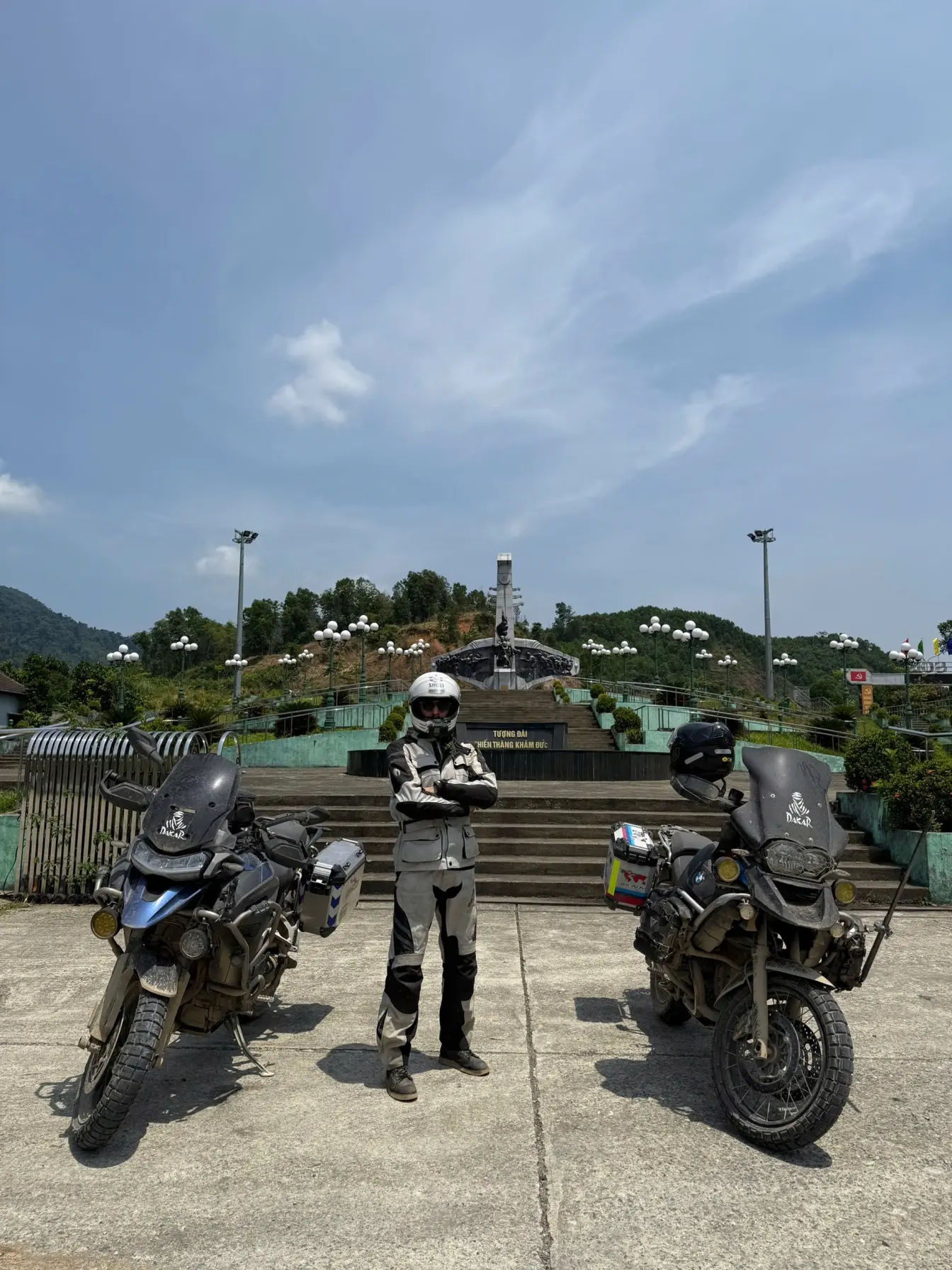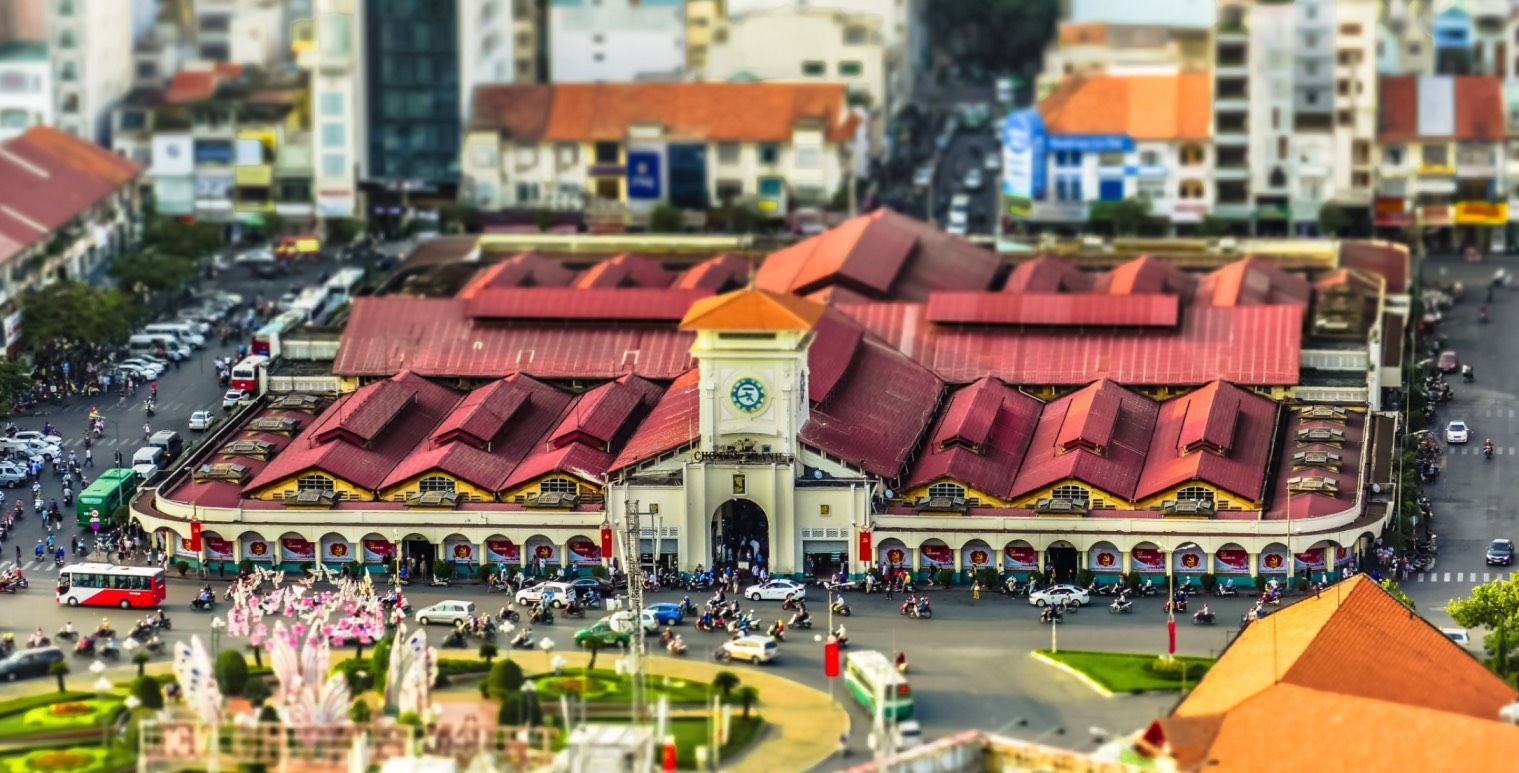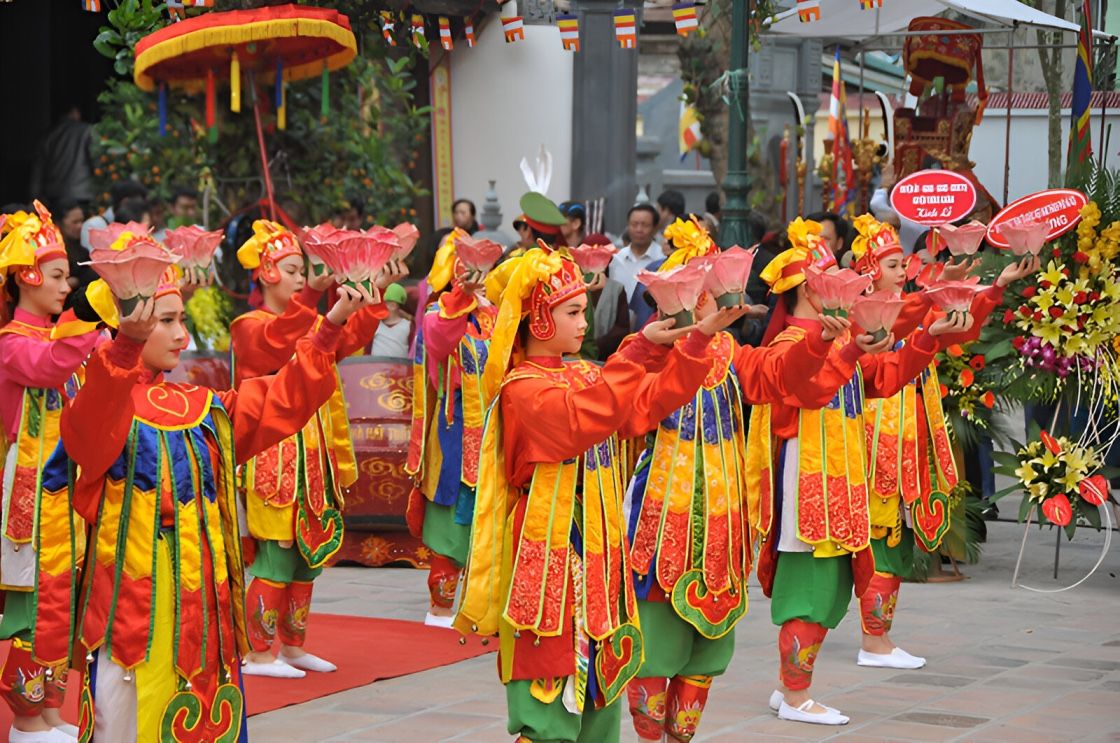
This guide is about Ho Chi Minh City after the July the 1st of the 2025 (Merger Guide To Ho Chi Minh Cit’s Districts) – Beyond its motorbike traffic and buzzing street life, the city is divided into districts that locals use to describe where they live, work, and socialize. Recently, the government merged several districts to streamline administration, but this shift created confusion for travelers and expats. You may hear people refer to places like District 2 or District 9, even though they now belong to the larger Thu Duc City.
For travelers, this matters when booking hotels, finding attractions, or navigating ride-hailing apps. You might see one name on Google Maps, hear another from your driver, and read something different in a travel blog. For expats, the merger affects practical issues like housing searches, residency paperwork, or even explaining your address to delivery services. What sounds like a simple name change actually shapes how you experience and understand daily life in Vietnam’s biggest city.
This guide breaks down Ho Chi Minh City’s districts after the merger, showing you where to eat, live, and explore without getting lost in outdated maps or old references. Whether you’re here for a short visit or planning a longer stay, understanding the city’s layout will help you move through it like a local—and discover why each district still carries its own identity and charm.
An Overview of Ho Chi Minh City’s Districts
Before the merger, Ho Chi Minh City had a patchwork of numbered districts and named areas, each with its own identity. District 1 carried the reputation as the commercial and cultural core, while District 2 became popular with expats for its villas and international schools. District 9 felt more suburban, with universities and tech hubs, and District 3 offered a quieter, more residential feel. Locals and longtime expats grew used to describing their lives in these terms—“I live in District 2” or “my office is in District 9”—because the district system shaped how people navigated and understood the city.
- Check out best things to do in Ho Chi Minh City
In 2021, the government merged Districts 2, 9, and Thu Duc into a single administrative unit now known as Thu Duc City. The goal was modernization and efficiency: streamline governance, reduce overlapping bureaucracy, and set the stage for future growth in education, business, and technology. From an official perspective, this made perfect sense, but for newcomers and even seasoned residents, it introduced another layer of confusion. Suddenly, neighborhoods locals had referred to for decades disappeared from the map—or at least from the government’s paperwork.
The important thing to know is that daily life hasn’t changed. Street food vendors still set up in the same corners, apartment complexes still carry their old district names, and Grab drivers still understand “District 2” when you tell them where to go. The merger altered administrative boundaries, not the city’s rhythm. For travelers and expats, this means you can think of Thu Duc City as a convenient umbrella term, but you’ll still hear and use the old district names in conversations, rental listings, and guides like this one.
No More Districts – Just Wards and Communes
The biggest shift after Ho Chi Minh City’s merger is that the familiar district system, at least on paper, no longer exists. Instead, the city now organizes itself into wards and communes, which serve as the official way to register addresses and handle paperwork. For the government, this makes administration smoother and more modern. For everyone else—travelers trying to find a hotel, expats signing a lease, or even locals ordering deliveries—it adds a new layer of confusion.
If you’re applying for a visa extension, signing a rental contract, or registering utilities, you’ll likely see only wards and communes listed on official documents. That’s where problems creep in. Google Maps, property ads, and even street signs often still use the old district names. You might read about a café in District 2, see it listed as Thu Duc City online, and then find “An Phu Ward” on your rental agreement. For first-timers, it feels like the city speaks three languages at once.
Expats run into this daily. Grab drivers still respond faster if you say “District 3” instead of naming the ward, landlords advertise apartments in “District 7” because that’s what people know, and even seasoned locals sometimes slip into the old habit. The merger changed the city’s administrative map, but not its lived reality. To navigate Ho Chi Minh City with confidence, you’ll need to understand both systems—what the government calls official, and what the streets still call home.
- Check out Vietnam motorbike tours
Central Ho Chi Minh City – What You Need to Know
The heart of Ho Chi Minh City hasn’t lost its rhythm, even after the district merger. The central neighborhoods remain the city’s cultural and commercial core, full of landmarks, nightlife, and everyday life that draw both locals and visitors. While the official system now counts wards instead of districts, people still use the old names—because they capture the unique personality of each area. Here’s what you need to know about the central districts that define the city experience.
District 1 (Now Four Wards)
District 1 is still the beating heart of Ho Chi Minh City. Even though it’s technically divided into four wards, everyone continues to call it District 1, and for good reason. This is where you’ll find Nguyễn Huệ Walking Street, the lively Bùi Viện nightlife strip, and the high-end shopping of Đồng Khởi. Travelers book hotels here because it feels like the city’s downtown, and expats often choose it for convenience, even if rents run higher. The merger hasn’t touched its energy—District 1 remains the place where modern Vietnam meets its colonial past, buzzing late into the night.
District 3 (Now Three Wards)
Just next door, District 3 offers a completely different vibe. While District 1 dazzles with neon and tourists, District 3 feels more Vietnamese at heart. It’s famous for its coffee culture, leafy streets, and a quieter, residential character that makes it popular with long-term expats who prefer a slower pace. Housing here is often more affordable, yet you’re still close to the action. Many locals even argue that District 3 is the “real Saigon” compared to District 1’s international shine.
District 4 (Merged to Three Wards)
District 4 has always been known as the bridge between the old downtown and the newer parts of the city. Officially it’s now three wards, but people still think of it as one district. Travelers and food lovers come here for street food alleys that stay busy until late, while expats often see it as a budget-friendly alternative to District 1. Living in District 4 means you’re just a few minutes from the city center, but your rent stretches further, and your daily meals are cheaper—and often tastier.
District 5 (Chinatown – Now Three Wards)
District 5, better known as Chinatown or Chợ Lớn, remains one of the most fascinating parts of Ho Chi Minh City. Even though the merger reduced it to three wards on paper, its identity is stronger than ever. This is where you’ll find Chinese temples, bustling herbal medicine shops, and markets that feel worlds away from the skyscrapers of District 1. Travelers come here for history and culture, while expats who love heritage often find themselves drawn to its old-world charm. Walking through Chợ Lớn feels like stepping into a living museum—one that still thrives as part of modern Saigon.
The New East – District 2 and Bình Thạnh
When people talk about the “new east” of Ho Chi Minh City, they’re usually referring to the neighborhoods just across the Saigon River. These areas bridge the gap between central districts and the expanding Thu Duc City, combining local character with rapid development. Expats know them for international schools and riverside living, while locals see them as up-and-coming spots reshaping the city’s future.
District 2 (Thảo Điền & Thủ Thiêm, Now Part of An Khánh Ward)
District 2 has long been the expat hotspot of Ho Chi Minh City. Thảo Điền, in particular, feels almost like a village within the city, filled with villas, international schools, yoga studios, craft breweries, and organic shops. Families often choose it for the space and greenery, while younger expats enjoy the mix of trendy cafés and riverside restaurants. On the other side, Thủ Thiêm is transforming rapidly, with a new skyline, luxury high-rises, and mega-projects designed to rival District 1. While the merger technically renamed these areas under An Khánh Ward in Thu Duc City, everyone—from landlords to Grab drivers—still calls them District 2.
Bình Thạnh (Now Five Wards)
Bình Thạnh sits between the downtown core and District 2, making it a natural transitional district. It’s famous for its street food alleys, bustling wet markets, and local neighborhoods, but it also hides some of the city’s most upscale riverside apartments along Nguyễn Hữu Cảnh Street. Many young expats and professionals choose Bình Thạnh because it balances affordability with easy access to both District 1 and District 2. You might grab a bowl of hủ tiếu from a roadside vendor in the morning and sip cocktails on a rooftop overlooking the river at night—Bình Thạnh gives you both worlds in one district.
The New South – District 7 (Phú Mỹ Hưng)
District 7, especially Phú Mỹ Hưng, feels like a city within a city. Built with modern infrastructure and wide, organized streets, it stands out from the chaotic energy of central Saigon. Expats often describe it as a mini international town, shaped by strong Korean and Japanese communities, complete with international schools, malls, and gated neighborhoods. For families, it offers safety, convenience, and a slower pace of life compared to District 1 or Bình Thạnh.
Real estate agents still advertise properties here as “District 7,” even though the administrative merger technically changed the map. That’s because the name carries weight—expats recognize it, locals use it, and it continues to represent a lifestyle brand. Living in Phú Mỹ Hưng means clean parks, modern condos, and international dining options, all just a short drive from the heart of Ho Chi Minh City.
Practical Guide for Expats and Travelers
Old vs New Address System
The merger created confusion because different platforms and services use different naming systems. Rental contracts and government documents now list wards and communes, while Grab drivers, real estate ads, and even Google Maps often stick to the old district names. Here’s a quick example of how the names changed:
| Old District Name | New Official Name | Commonly Used Today |
|---|---|---|
| District 2 | An Khánh Ward (Thu Duc City) | “District 2” |
| District 9 | Long Bình, Hiệp Phú (Thu Duc City) | “District 9” |
| District 7 | Phú Mỹ Ward | “District 7” |
| District 5 | Three Wards (Chợ Lớn area) | “Chinatown / District 5” |
Most people still use the old district names because they’re easier to understand and carry strong cultural identity.
Common Challenges
Expats and travelers face daily hurdles with the new system:
- Grab and taxi confusion: Drivers may only recognize the old district name, not the new ward.
- Property listings: Landlords and agencies almost always market apartments by old district labels.
- Postal services: While slowly adapting, many deliveries still rely on the old system to avoid mistakes.
Tips to Navigate the Change
- Mention both names: When giving an address, say the old district first, then the new ward (e.g., “District 2, An Khánh Ward”).
- Double-check maps: Search both the district name and ward name on Google Maps to avoid confusion.
- Ask locals: The fastest way to learn is by asking how residents themselves describe their area.
By blending both systems, you’ll avoid most of the frustration and move through Ho Chi Minh City like a local who knows the “unwritten rules” of the merger.
FAQs: Ho Chi Minh City’s District Merger
Is District 1 still called District 1?
Yes. District 1 officially became four wards, but everyone still calls it District 1. It remains the city’s downtown and main landmark area.
Why did HCMC merge its districts?
The government merged districts to improve administrative efficiency and support modern urban planning, especially in Thu Duc City.
What should I put on my address in Vietnam?
Use the ward name for official documents, but include the old district name for clarity on deliveries, rentals, or directions.
How does this affect travelers and expats?
Daily life hasn’t changed much—you’ll still hear and use old district names. The main difference shows up in maps, paperwork, and property ads.
Final Thoughts: Does the Merger Change the City?
At the end of the day, the merger hasn’t really changed how people live in Ho Chi Minh City. For locals, it’s mostly just an administrative shift—the same streets, the same neighborhoods, the same daily routines. Street vendors still set up on familiar corners, families still call their homes by the old district names, and conversations still flow the way they always have.
For travelers and expats, the change matters less for lifestyle and more for addresses and navigation. When booking an apartment, ordering a Grab, or filling out official documents, knowing the difference between old district names and new ward labels saves you time and confusion. Think of it this way: the city’s identity hasn’t changed, but the paperwork has.
Understanding the merger won’t transform your experience of Saigon, but it will help you move through it more smoothly—like someone who knows the city’s inside rules. And in a place as dynamic and fast-moving as Ho Chi Minh City, that little bit of local knowledge goes a long way.
About the Author
Hamid is a travel writer who explores Southeast Asia with an eye for culture, history, and everyday life. He shares practical guides for expats and travelers, making complex details easy to understand.
Source and Citation Note
All districts’ addresses, information, and descriptions are based on personal visits and interviews conducted on October 1, 2025. Listings have been independently verified and are updated regularly for accuracy through the local government of Ho Chi Minh City.











